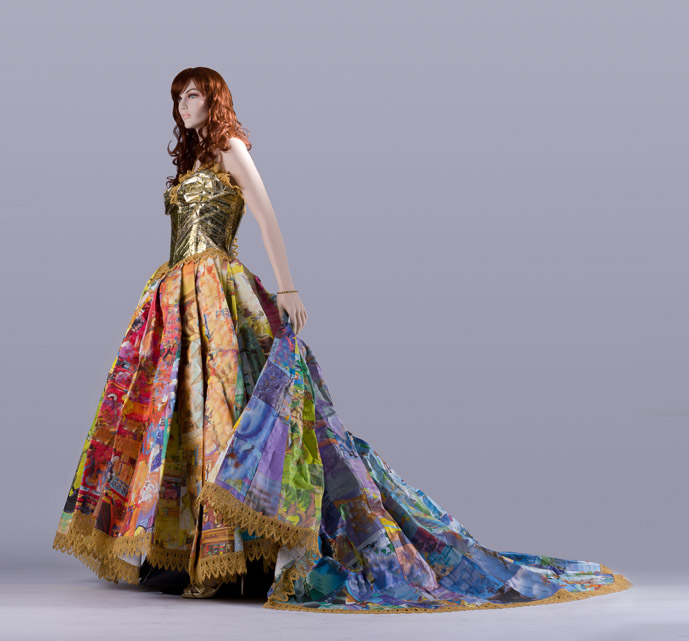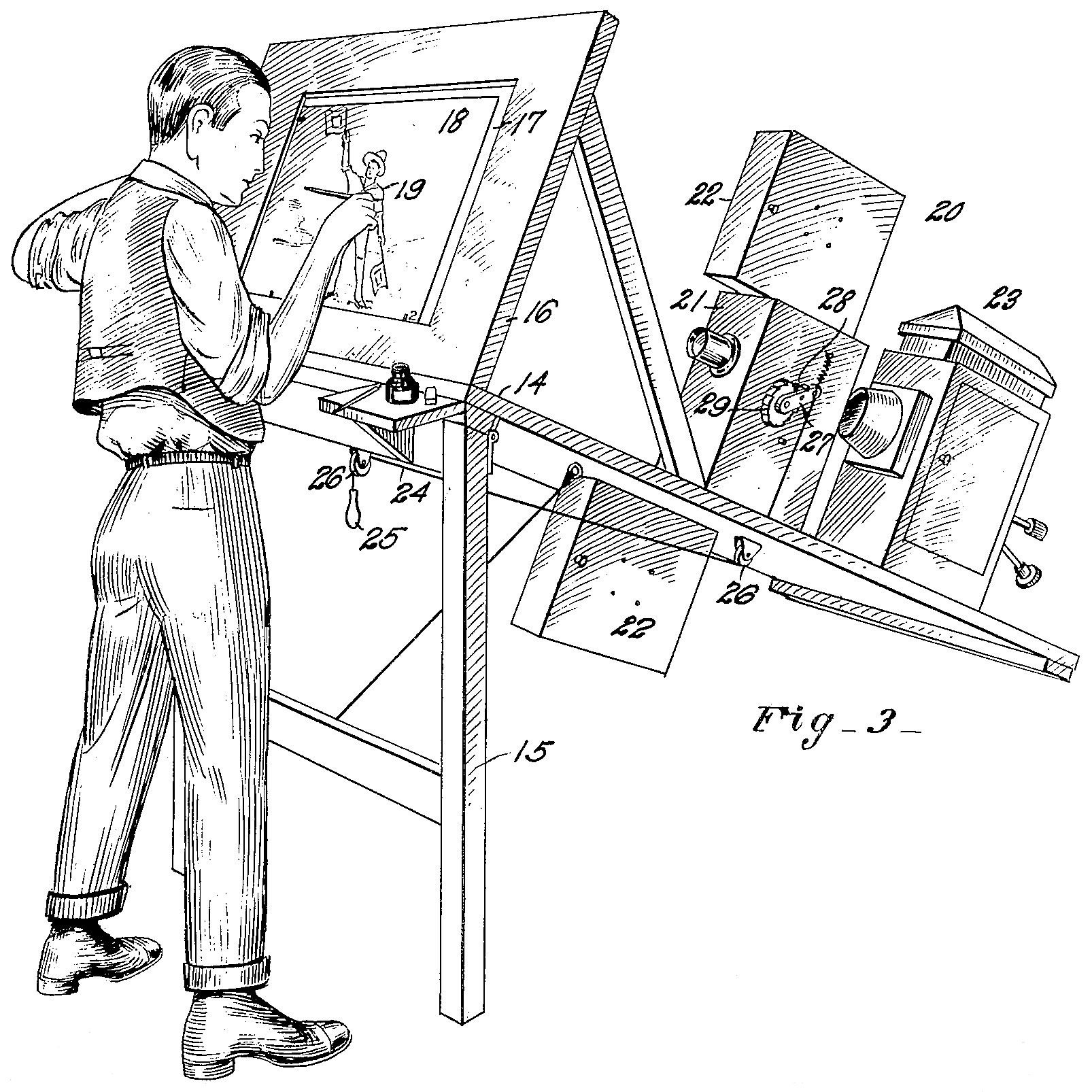|
Tom Terrific
''Tom Terrific'' is a 1957–1959 animated series on American television, presented as part of the '' Captain Kangaroo'' children's television show. Created by Gene Deitch under the Terrytoons studio (which by that time was a subsidiary of CBS, the network that broadcast ''Captain Kangaroo''), ''Tom Terrific'' was made as twenty-six stories, each split into five episodes, with one five-minute episode broadcast per day. The first thirteen stories were filmed in 1957, with the second set in 1958. ''Captain Kangaroo'' continued to rerun the episodes for many years. Starting in 1962, ''Captain Kangaroo'' broadcast ''Tom Terrific'' every other week, alternating with Terrytoons' ''Lariat Sam''. Drawn in a simple black-and white style reminiscent of children's drawings, the show features a gee-whiz boy hero, Tom Terrific, who lives in a treehouse and can transform himself into anything he wants, thanks to his magical funnel-shaped "thinking cap", which also enhances his intelligence ... [...More Info...] [...Related Items...] OR: [Wikipedia] [Google] [Baidu] |
Animated Television Series
An animated series is a set of animated works with a common series title, usually related to one another. These episodes should typically share the same main characters, some different secondary characters and a basic theme. Series can have either a finite number of episodes like a miniseries, a definite end, or be open-ended, without a predetermined number of episodes. They can be broadcast on television, shown in movie theatres, released direct-to-video or on the internet. Like other television series, films, including animated films, animated series can be of a wide variety of genres and can also have different demographic target audiences, from males to females ranging children to adults. Television Animated television series are regularly presented and can appear as much as up to once a week or daily during a prescribed time slot. The time slot may vary including morning, like saturday-morning cartoons, prime time, like prime time cartoons, to late night, like ... [...More Info...] [...Related Items...] OR: [Wikipedia] [Google] [Baidu] |
Sidekick
A sidekick is a slang expression for a close companion or colleague (not necessarily in fiction) who is, or is generally regarded as, subordinate to the one they accompany. Some well-known fictional sidekicks are Don Quixote's Sancho Panza, Sherlock Holmes' Doctor Watson, The Lone Ranger's Tonto, The Green Hornet's Kato, Shrek's Donkey and Puss in Boots, Mickey Mouse's Donald Duck and Goofy, Mario's Luigi and Yoshi, Sonic's Tails and Knuckles, Donkey Kong's Diddy Kong, Daffy Duck's Porky Pig, Captain America's Bucky and Batman's Robin. Origins The first recorded use of the term dates from 1896. It is believed to have originated in pickpocket slang of the late 19th century. The "kick" was the front pocket of a pair of trousers, believed to be the pocket safest from theft. Thus, by analogy, a "side-kick" was a person's closest companion.Morris, EvanWord Detective(December 20, 1999). One of the earliest recorded sidekicks may be Enkidu, who adopted a sidekick ro ... [...More Info...] [...Related Items...] OR: [Wikipedia] [Google] [Baidu] |
Pseudonym
A pseudonym (; ) or alias () is a fictitious name that a person or group assumes for a particular purpose, which differs from their original or true name (orthonym). This also differs from a new name that entirely or legally replaces an individual's own. Many pseudonym holders use pseudonyms because they wish to remain Anonymity, anonymous, but anonymity is difficult to achieve and often fraught with legal issues. Scope Pseudonyms include stage names, User (computing), user names, ring names, pen names, aliases, superhero or villain identities and code names, gamer identifications, and regnal names of emperors, popes, and other monarchs. In some cases, it may also include nicknames. Historically, they have sometimes taken the form of anagrams, Graecisms, and Latinisation (literature), Latinisations. Pseudonyms should not be confused with new names that replace old ones and become the individual's full-time name. Pseudonyms are "part-time" names, used only in certain contexts – ... [...More Info...] [...Related Items...] OR: [Wikipedia] [Google] [Baidu] |
Tom Tomorrow
Tom Tomorrow is the pen name of editorial cartoonist Dan Perkins (born April 5, 1961, in Wichita, Kansas). His weekly comic strip, '' This Modern World'', which comments on current events, appears regularly in more than 80 newspapers across the United States and Canada as of 2015, as well as in '' The Nation'', '' The Nib'', '' Truthout'', and the '' Daily Kos'', where he was the former comics curator and now is a regular contributor. His work has appeared in '' The New York Times'', '' The New Yorker'', ''Spin'', '' Mother Jones'', ''Esquire'', '' The Economist'', ''Salon'', '' The American Prospect'', ''CREDO Action'', and '' AlterNet''. Career Perkins was first published in the San Francisco-based anarchist magazine '' Processed World''. He adopted the subject matter of the consumer culture and the drudgery of work, a theme shared by the magazine, and entitled his comic strip ''This Modern World'' when it was launched in 1988. (Like many of the magazine's contributors he ... [...More Info...] [...Related Items...] OR: [Wikipedia] [Google] [Baidu] |
Crabby Appleton
Crabby Appleton was an American rock band in the early 1970s. Fronted by singer-songwriter Michael Fennelly, they scored a Top 40 hit with their first single, "Go Back." History Though nearly everyone in the group was from a Los Angeles, California-based band called Stonehenge, the group's line-up was revamped with the introduction of Michael Fennelly, who had been one of the principal vocalists and songwriters in The Millennium. The group's other members included Felix "Flaco" Falcon (percussion), Casey Foutz (keyboards), Hank Harvey (bass), and Phil Jones (drums). Jones, previously of Oskaloosa, Iowa, but more recently of Laurel Canyon, helped form the band after meeting Fennelly at Thee Experience, a club on the Sunset Strip. Jones had heard the song, "To Claudia on Thursday," which Fennelly wrote and sang with his group The Millennium, and, encouraged by record producer David Anderle, recruited Fennelly to join Stonehenge as lead singer, guitarist, and songwrite ... [...More Info...] [...Related Items...] OR: [Wikipedia] [Google] [Baidu] |
Little Golden Books
Little Golden Books is a series of children's books, published since 1942. '' The Poky Little Puppy'', the eighth release in the series, is the top-selling children's book of all time in the United States.. Many other Little Golden Books have become bestsellers, including ''Tootle'', '' Scuffy the Tugboat'', ''The Little Red Hen'', and ''Doctor Dan the Bandage Man''. Several of its illustrators later became influential within the children's book industry, including Corinne Malvern, Tibor Gergely, Gustaf Tenggren, Feodor Rojankovsky, Richard Scarry, Eloise Wilkin, and Garth Williams. Many books in the Little Golden Books series deal with nature, science, Bible stories, nursery rhymes, and fairy tales. Christmas titles are published every year. Some Little Golden Books and related products have featured popular characters from other media, such as ''Disney, ''Looney Tunes'', ''The Muppets'', ''Sesame Street'', ''Sonic the Hedgehog'', ''Barbie'', ''Power Rangers'', Thom ... [...More Info...] [...Related Items...] OR: [Wikipedia] [Google] [Baidu] |
Wonder Books
The Wonder Books are a series of books produced in the 1930s and 1940s. It was published by the University of Knowledge Incorporated, editor in chief An editor-in-chief (EIC), also known as lead editor or chief editor, is a publication's editorial leader who has final responsibility for its operations and policies. The highest-ranking editor of a publication may also be titled editor, managing ... being Glenn Frank. It is not to be confused with the children's book imprint of Grosset and Dunlap. List of Wonder Books (There are 24 volumes) # The Earth Before Man - The story of how things began # The Story of Man - His earliest appearance and development to the portals of history # The Dawn of Civilization - And life in the ancient East # Selected Readings -from much loved books # The Glories of Ancient History # History From The Renaissance to Napoleon # The Outline of Modern History # Outline History of World Literature # The World we live in and The people we l ... [...More Info...] [...Related Items...] OR: [Wikipedia] [Google] [Baidu] |
Ralph Bakshi
Ralph Bakshi (born October 29, 1938) is an American animator and filmmaker. In the 1970s, he established an alternative to mainstream animation through independent and adult-oriented productions. Between 1972 and 1992, he directed nine theatrically released feature films, five of which he wrote. He has been involved in numerous television projects as director, writer, producer, and animator. Beginning his career at the Terrytoons television cartoon studio as a cel polisher, Bakshi was eventually promoted to animator, and then director. He moved to the animation division of Paramount Pictures in 1967 and started his own studio, Bakshi Productions, in 1968. Through producer Steve Krantz, Bakshi made his debut feature film, '' Fritz the Cat'', released in 1972. It was based on the comic strip by Robert Crumb and was the first animated film to receive an X rating from the Motion Picture Association of America, and is the most successful independent animated feature of all t ... [...More Info...] [...Related Items...] OR: [Wikipedia] [Google] [Baidu] |
Pines Comics
Standard Comics was a comic book imprint of American publisher Ned Pines, who also published pulp magazines (under a variety of company names that he also used for the comics) and paperback books (under the Popular Library name). Standard in turn was the parent company of two comic-book lines: BetterBetter at the Grand Comics Database. and Nedor Publishing.Nedor Publishing at the Grand Comics Database. Collectors and historians sometimes refer to them collectively as "Standard/Better/Nedor". History In business from 1939 to 1956, Standard was a prolific publisher during the |
Blu-ray
The Blu-ray Disc (BD), often known simply as Blu-ray, is a digital optical disc data storage format. It was invented and developed in 2005 and released on June 20, 2006 worldwide. It is designed to supersede the DVD format, and capable of storing several hours of high-definition video (HDTV 720p and 1080p). The main application of Blu-ray is as a medium for video material such as feature films and for the physical distribution of video games for the PlayStation 3, PlayStation 4, PlayStation 5, Xbox One, and Xbox Series X. The name "Blu-ray" refers to the blue laser (which is actually a violet laser) used to read the disc, which allows information to be stored at a greater density than is possible with the longer-wavelength red laser used for DVDs. The polycarbonate disc is in diameter and thick, the same size as DVDs and CDs. Conventional or pre-BD-XL Blu-ray Discs contain 25 GB per layer, with dual-layer discs (50 GB) being the industry standard for fea ... [...More Info...] [...Related Items...] OR: [Wikipedia] [Google] [Baidu] |
TV Guide
TV Guide is an American digital media company that provides television program TV listings, listings information as well as entertainment and television-related news. The company sold its print magazine division, TV Guide Magazine, TV Guide Magazine LLC, in 2008. Corporate history Prototype The prototype of what would become ''TV Guide Magazine'' was developed by Lee Wagner (1910–1993), who was the circulation director of Macfadden Communications Group#Macfadden Publications, MacFadden Publications in New York City in the 1930s – and later, by the time of the predecessor publication's creation, for Cowles Media Company – distributing magazines focusing on movie celebrities. In 1948, Wagner printed New York City area listings magazine ''The TeleVision Guide'', which was first released on local newsstands on June 14 of that year. Silent film star Gloria Swanson, who then starred of the short-lived variety show, variety series ''The Gloria Swanson Hour'', appeared on the c ... [...More Info...] [...Related Items...] OR: [Wikipedia] [Google] [Baidu] |
Courage The Cowardly Dog
''Courage the Cowardly Dog'' is an American animated comedy horror television series created by John R. Dilworth for Cartoon Network and distributed by Warner Bros. Domestic Television. It was produced by Dilworth's animation studio, Stretch Films, and originally aired from 1999 to 2002. The title character is a dog who lives with an elderly couple in a farmhouse in the middle of "Nowhere". In each episode, the trio is thrown into bizarre, frequently disturbing, and often paranormal or supernatural adventures. The series is known for its dark, surreal humor and atmosphere. Dilworth pitched the series to Hanna-Barbera's animated shorts showcase '' What a Cartoon!'' and a pilot titled "The Chicken from Outer Space" aired on Cartoon Network on February 18, 1996. The segment was nominated for an Academy Award, but lost to the Wallace and Gromit short film '' A Close Shave''. The short was greenlit to become a series, which premiered on November 12, 1999, and ended on November 22, 200 ... [...More Info...] [...Related Items...] OR: [Wikipedia] [Google] [Baidu] |







